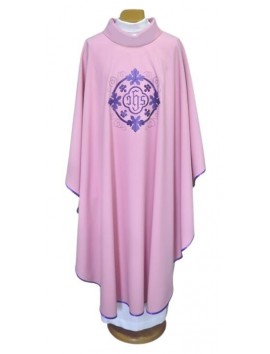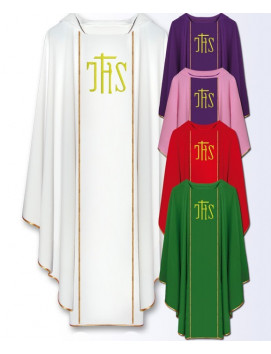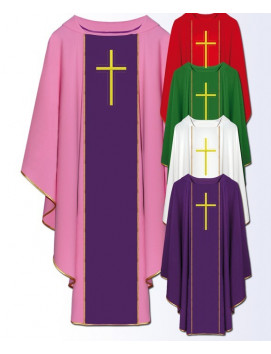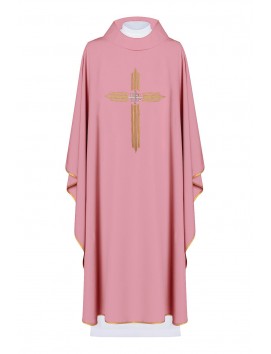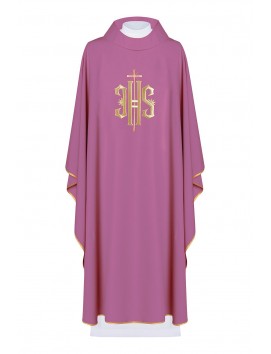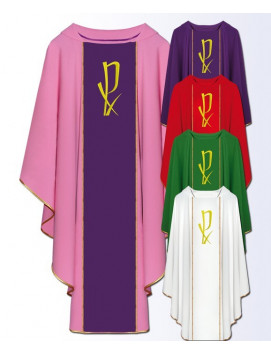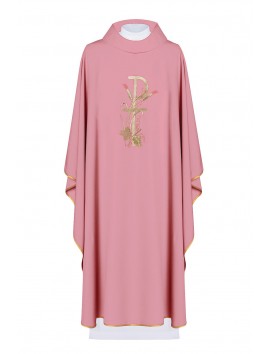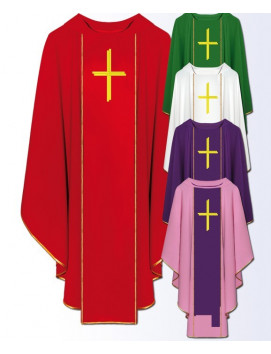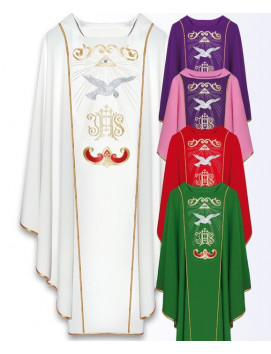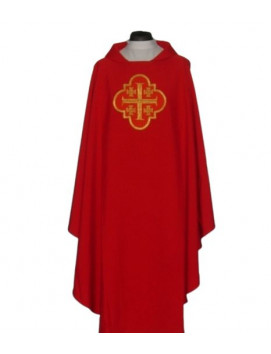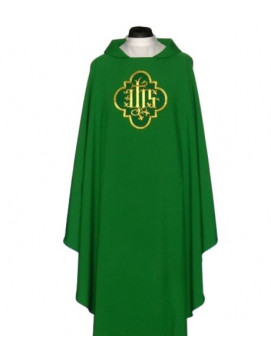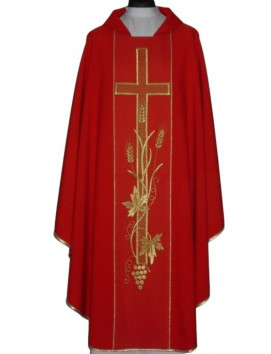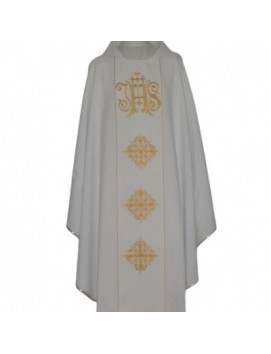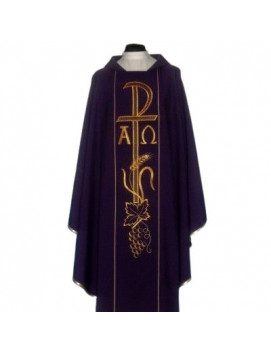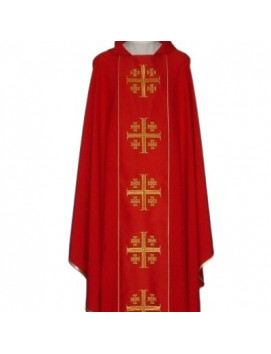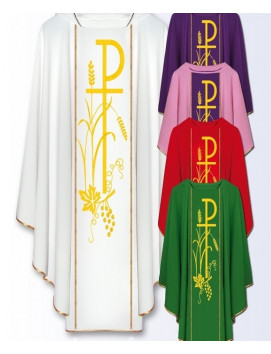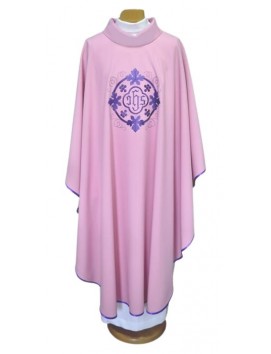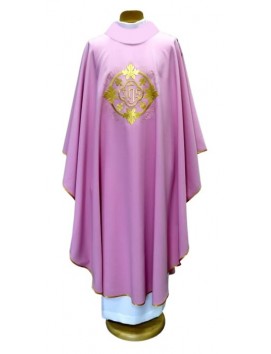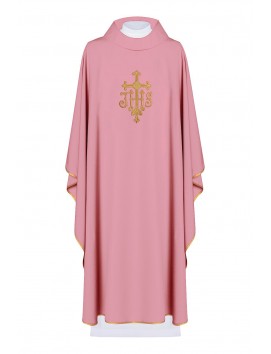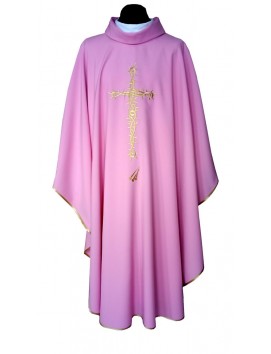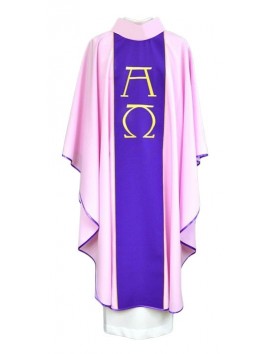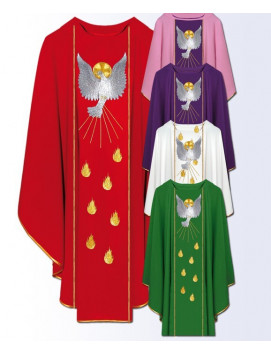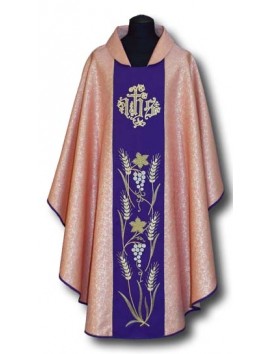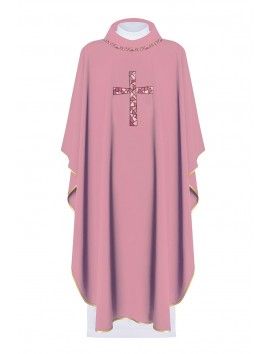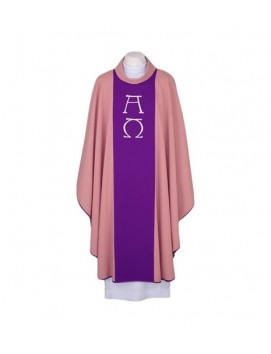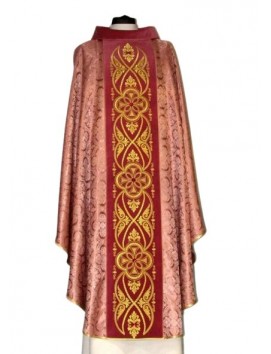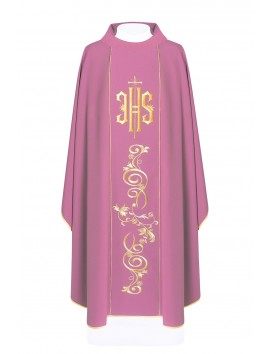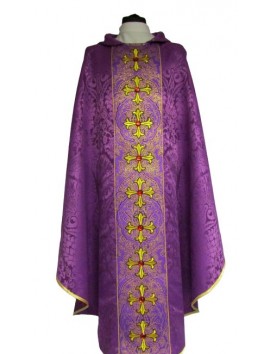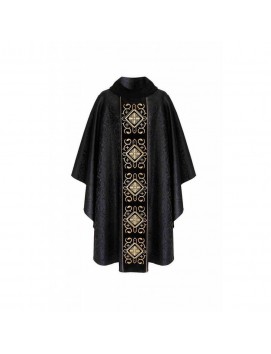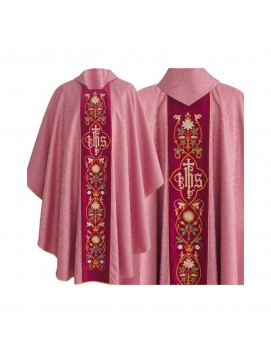No products
Pink chasubles
Pink chasubles, also known as rose chasubles, are liturgical vestments worn by Catholic priests on the third Sunday of Advent (Gaudete Sunday) and the fourth Sunday of Lent (Laetare Sunday). The color pink or rose symbolizes joy and rejoicing amidst a season of penance and preparation. The use of pink chasubles is meant to remind us that the season of preparation is coming to a close and the great feast is swiftly approaching. Pink chasubles can be purchased from various online shops and are often made to order.
Pink chasubles, also known as rose chasubles, are liturgical vestments worn by Catholic priests on the third Sunday of Advent (Gaudete Sunday) and the fourth Sunday of Lent (Laetare Sunday). The color pink or rose symbolizes joy and rejoicing amidst a season of penance and preparation. The use of pink chasubles is meant to remind us that the season of preparation is coming to a close and the great feast is swiftly approaching. Pink chasubles can be purchased from various online shops and are often made to order.
-
Chasuble with computer-embroidered belt (1) Chasuble with computer-embroidered belt (1)
Chasuble with computer-embroidered belt (1) Chasuble with...
$ 149
The rose chasuble is a distinctive liturgical vestment used in the Roman Catholic Church, and its use is steeped in tradition and symbolism. This garment is not just a mere piece of clothing; it carries deep spiritual significance and is used only on specific occasions within the liturgical calendar.
The Significance of Color in Liturgical Vestments
Liturgical vestments come in various colors, each representing different aspects of the Christian faith. The rose chasuble, in particular, is worn during the third Sunday of Advent, known as Gaudete Sunday, and the fourth Sunday of Lent, called Laetare Sunday. These days are moments of joy and anticipation amidst the penitential seasons, and the rose color symbolizes this lightening of penance and the nearing celebration of major Christian feasts.
The Rarity and Beauty of the Rose Chasuble
Rose vestments are rare, used only twice a year, which adds to their special nature. The color rose is a lighter shade of violet, not to be confused with pink, and it serves as a visual cue to the faithful that a time of rejoicing is at hand. The rose chasuble is a reminder to the congregation of the joy that is to come with the approaching feasts of Christmas and Easter.
The Design and Craftsmanship
The design of a rose chasuble can vary, but it often includes intricate patterns and symbols that reflect its liturgical use. The craftsmanship involved in creating these vestments is considerable, with attention to detail ensuring that the vestments are both beautiful and appropriate for the solemnity of the Mass.
FAQs About the Rose Chasuble
Q: Why is the rose chasuble used so infrequently?
A: The rose chasuble is used only on Gaudete and Laetare Sundays, which are specific Sundays in Advent and Lent that mark a time of joy within these penitential seasons.
Q: Can the rose chasuble be any shade of pink?
A: No, the rose chasuble should not be pink but a specific shade of rose that is a lightened violet. It is distinct from both violet and pink, symbolizing joy without losing the penitential nature of the seasons.
Q: What is the historical origin of the rose chasuble?
A: The rose chasuble, like other liturgical vestments, has its origins in the garments worn by religious figures in ancient times. Its use in the liturgy has evolved over centuries to become a symbol of joy and anticipation.
Conclusion
The rose chasuble is more than just a liturgical garment; it is a rich symbol of the Christian faith, representing joy and hope in the midst of penance. Its use brings a visual element to the liturgy that reminds the faithful of the nearness of the Lord's coming and the importance of rejoicing in the Christian journey.

